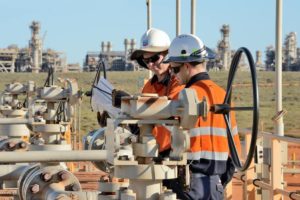The NSW government has outlined its proposed route for a new 115 kilometre transmission line through the Hunter Valley, threading a path through mines, forests and along existing easements for a project it says is essential to pave the way for the shift from coal.
The Hunter Transmission Project is designed to deliver at least 5 gigawatts of additional wind and solar power from the renewable energy zones created in the New England and Central-West Orana regions.
The Hunter Transmission Project will take the wind and solar power from next to the Bayswater coal fired power station in the upper Hunter, to the site of the soon to be shuttered Eraring coal fired generator on the central coast, from where the electricity will be distributed to major load centres in Sydney, Newcastle and Wollongong.
The route identified by the state government owned Energy Corporation of NSW (EnergyCo) threads a careful path for the 500kW transmission link in a clear attempt to avoid the sort of pushback that has plagued other transmission projects in NSW, Victoria and elsewhere.
It also comes as the NSW government faces push back from the wind industry over draft planning guidelines, and vocal opposition from some community members led by the federal Coalition and conservative media as the state struggles to keep pace with the rollout of renewables needed to replace coal.
“The Hunter Transmission Project is critical to ensuring the future energy security of NSW, achieving our net zero targets and providing more affordable energy as coal-fired power stations close,” minister for energy Penny Sharpe said in a statement.
“It’s also important to the economic future of the Hunter region and will boost local jobs and businesses.”
The route for the main link from the Central West Orana zone into Bayswater was adjusted following feedback from the community, and the Hunter Transmission Projects has identified a proposed corridor to take it from Bayswater to Eraring.
EnergyCo says it has avoided the town of Singleton, and the wine and tourist areas around Polkobin, and villages such as Millfield and Wollombi, and to minimise impacts on significant scenic landscapes.
The first part of the corridor is wide as it passes through mining leases and EnergyCo is yet to finalise deals on the exact route. The link is then proposed to move through mostly state forest and conservation areas, before linking up with an existing transmission line for the final part of the route.
The government says EnergyCo believes the proposed route strikes a reasonable balance between different land uses and minimises the use of privately-owned land.
Landowners who do host transmission infrastructure will receive increased payments under the state’s Strategic Benefit Payments scheme, which amounts to $200,000 per kilometre over 20 years.
The proposed route is on public exhibition until Monday, December 18, and EnergyCo will continue working with local communities over the next 18 months “to get the details right”. The project is expected to be operational in 2027-28.
“We need community input to get the design right,” Sharpe said. “Feedback will influence the location of the corridor, and we want to resolve as much detail as possible with communities and potentially affected landowners in these early stages.”
The document says two 500 kV transmission lines may ultimately be needed. The first is considered urgent and must be operating by early 2028 and will provide an extra 5 GW of transfer capacity.
A second transmission line (HTP 2) may be required after 2033 to support future growth in the renewable energy zones. Its timing will depend on how quickly electricity demand grows and the actual retirement of the coal-fired power stations.











